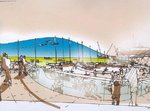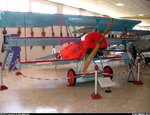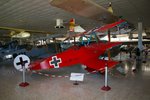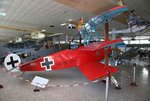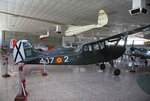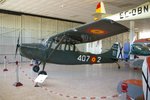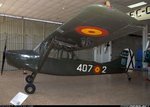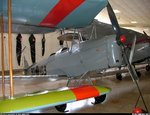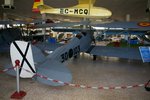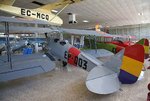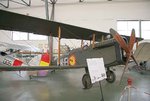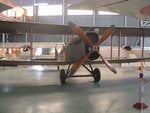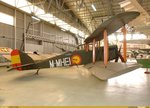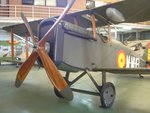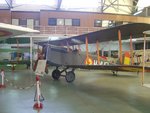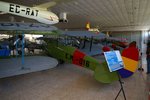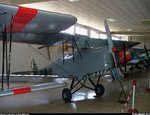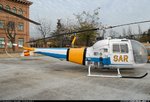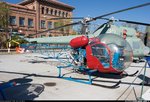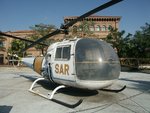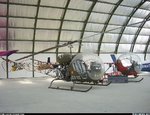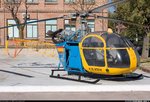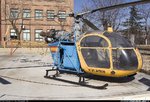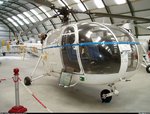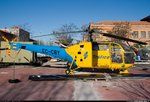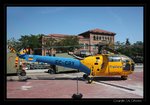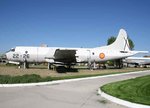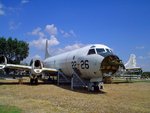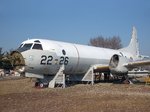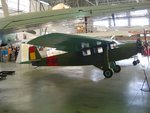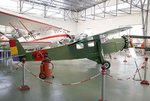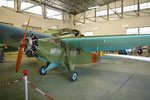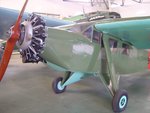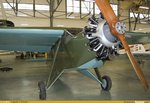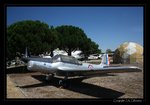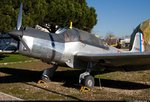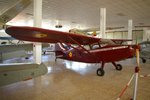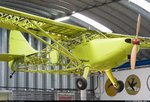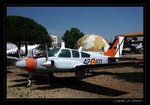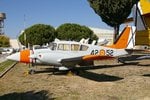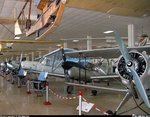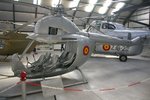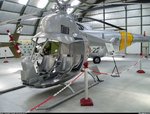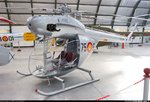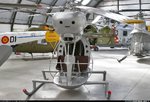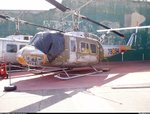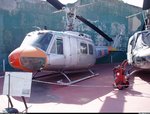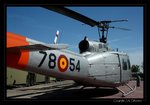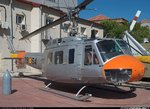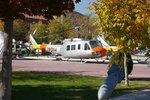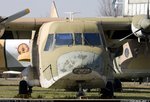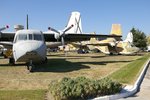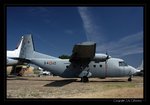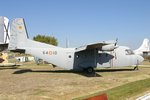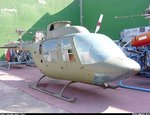- Thread starter
- #61
Navigation
Install the app
How to install the app on iOS
Follow along with the video below to see how to install our site as a web app on your home screen.
Note: This feature may not be available in some browsers.
More options
You are using an out of date browser. It may not display this or other websites correctly.
You should upgrade or use an alternative browser.
You should upgrade or use an alternative browser.
Museo de Cuatro Vientos, Madrid, Spain
- Thread starter gekho
- Start date
Ad: This forum contains affiliate links to products on Amazon and eBay. More information in Terms and rules
More options
Who Replied?twoeagles
Senior Airman
Fantastic - I am loving this tour of what is clearly a very fine museum that I probably won't be able to see myself. Some extraordinary pre-WW2 light aircraft frequently overlooked because they are overshadowed by the more "glamorous" heavy metal. Thanks, Gekho! Very, very cool.
- Thread starter
- #63
This is the truth; the Cuatro Vientos Museum is moving to Getafe. The british architect Norman Foster will take care of the new museum design, which will also house the collection of the Infante de Orleans Foundation, with more than 34 airworthy historical airplanes. The museum is expected to open its doors in 2011
Attachments
- Thread starter
- #64
The Fokker Dr.I Dreidecker (triplane) was a World War I fighter aircraft built by Fokker-Flugzeugwerke. The Dr.I saw widespread service in the spring of 1918. It became renowned as the aircraft in which Manfred von Richthofen gained his last 20 victories, and in which he was killed on 21 April 1918.
While no Dr.I airframes survive, large numbers of flying and static reproductions have been built. In 1932, Fokker built a replica Dr.I from the spare parts of various aircraft. The replica appeared in the 1939 movie D III 88. Bitz Flugzeugbau GmbH built two Dr.I replicas for use in Twentieth Century Fox's 1966 movie The Blue Max.
Today, the Omaka Aviation Heritage Centre in Blenheim, New Zealand, maintains four flyable aircraft, while the Great War Flying Museum in Brampton, Ontario operates two more. Two well-known examples are displayed at Old Rhinebeck Aerodrome in Rhinebeck, New York. Due to the expense and scarcity of authentic rotary engines, most airworthy reproductions are powered by a Warner Scarab or Continental R-670 radial engine. A few reproductions, however, feature vintage Le Rhône 9 engines. The example of the museum was specially made for the 1992 Expo, that took place in Sevilla.
While no Dr.I airframes survive, large numbers of flying and static reproductions have been built. In 1932, Fokker built a replica Dr.I from the spare parts of various aircraft. The replica appeared in the 1939 movie D III 88. Bitz Flugzeugbau GmbH built two Dr.I replicas for use in Twentieth Century Fox's 1966 movie The Blue Max.
Today, the Omaka Aviation Heritage Centre in Blenheim, New Zealand, maintains four flyable aircraft, while the Great War Flying Museum in Brampton, Ontario operates two more. Two well-known examples are displayed at Old Rhinebeck Aerodrome in Rhinebeck, New York. Due to the expense and scarcity of authentic rotary engines, most airworthy reproductions are powered by a Warner Scarab or Continental R-670 radial engine. A few reproductions, however, feature vintage Le Rhône 9 engines. The example of the museum was specially made for the 1992 Expo, that took place in Sevilla.
Attachments
- Thread starter
- #65
The Cessna L-19/O-1 Bird Dog was a liaison and observation aircraft. It was the first all metal fixed wing aircraft ordered for and by the United States Army since the U.S. Army Air Forces separated from the Army in 1947, becoming its own branch of service, the U.S. Air Force. The Bird Dog had a lengthy career in the U.S. military as well as in other countries.
Attachments
- Thread starter
- #66
The de Havilland DH 82 Tiger Moth is a 1930s biplane designed by Geoffrey de Havilland and was operated by the Royal Air Force and others as a primary trainer. The Tiger Moth remained in service with the RAF until 1952 when many of the surplus aircraft entered civil operation. Many other nations used the Tiger Moth both in military and civil applications and is still in use as a recreational aircraft. It is still occasionally used as a primary training aircraft, although now most Tiger Moths employed in training duties are used by pilots gaining experience for conventional landing gear license ratings.
During World War II, most Royal Air Force pilots trained in Tiger Moths, including Americans who flew with the Eagle Squadrons before the United States entered the war. In the United Kingdom, Tiger Moths performed a variety of roles in addition to that of primary trainer, including submarine patrol, air ambulance and even prisoner evacuation. The U.S. Army Air Forces in 1942 ordered 200 from de Havilland of Canada as the PT-24, but these were never delivered and were diverted to the Royal Canadian Air Force instead.
During World War II, most Royal Air Force pilots trained in Tiger Moths, including Americans who flew with the Eagle Squadrons before the United States entered the war. In the United Kingdom, Tiger Moths performed a variety of roles in addition to that of primary trainer, including submarine patrol, air ambulance and even prisoner evacuation. The U.S. Army Air Forces in 1942 ordered 200 from de Havilland of Canada as the PT-24, but these were never delivered and were diverted to the Royal Canadian Air Force instead.
Attachments
- Thread starter
- #67
The Airco DH.4 was a British two-seat biplane day-bomber of the First World War. It was designed by Geoffrey de Havilland (hence "DH") for Airco, and was the first British two seat light day-bomber to have an effective defensive armament. It first flew in August 1916 and entered service with the Royal Flying Corps (RFC) in March 1917. The majority of DH.4s were actually built as general purpose two-seaters in the USA, for service with the American forces in France.
The DH.4 was tried with several engines, of which the best was the 380 hp (280 kW) Rolls-Royce Eagle engine. Armament and ordnance for the aircraft consisted of one 0.303 in (7.7 mm) Vickers machine gun for the pilot and one 0.303 in (7.7 mm) Lewis gun on a Scarff ring mounting for the observer. Two 230 lb (100 kg) bombs or four 112 lb (51 kg) bombs could be carried. The DH.4 entered service on 6 March 1917 with No. 55 Squadron in France.
The DH.4 was tried with several engines, of which the best was the 380 hp (280 kW) Rolls-Royce Eagle engine. Armament and ordnance for the aircraft consisted of one 0.303 in (7.7 mm) Vickers machine gun for the pilot and one 0.303 in (7.7 mm) Lewis gun on a Scarff ring mounting for the observer. Two 230 lb (100 kg) bombs or four 112 lb (51 kg) bombs could be carried. The DH.4 entered service on 6 March 1917 with No. 55 Squadron in France.
Attachments
- Thread starter
- #68
Although the DH 60T was aggressively marketed as a military trainer, response was rather lukewarm. In particular the RAF only purchased a handful of aircraft for testing and found that many aspects of the Moth did not suit their method of military flight training.
Moth trainers were however ordered by a number of foreign air forces including those of Argentina, Australia (as noted above), Austria, Norway, Portugal, Sweden and the flying arm of the Danish Navy. Finland licence-built 22 Moth trainers, but equipped them with the old Cirrus engine. The bulk of military Moths however were civilian sportplanes impressed during the Second World War and used as trainers and liaison aircraft. These Moths ended up flying, amongst others, for Egypt, New Zealand, China (with several captured ex-Chinese aircraft flying for the Japanese), Ireland, Italy, Iraq, Belgian Congo, Dutch East Indies (later taken over by the Indonesian AF), South Africa, New Zealand, the US Navy and both the Nationalist and Republican side in the Spanish Civil War.
Two Gipsy Moths were purchased by the Paraguayan government during the Chaco War. They were used as liaison aircraft. One was lost in a fatal accident at Ñu-Guazú Air Force Base and the other survived the war. It was transferred to the Paraguayan Aeroclub in 1936.
Moth trainers were however ordered by a number of foreign air forces including those of Argentina, Australia (as noted above), Austria, Norway, Portugal, Sweden and the flying arm of the Danish Navy. Finland licence-built 22 Moth trainers, but equipped them with the old Cirrus engine. The bulk of military Moths however were civilian sportplanes impressed during the Second World War and used as trainers and liaison aircraft. These Moths ended up flying, amongst others, for Egypt, New Zealand, China (with several captured ex-Chinese aircraft flying for the Japanese), Ireland, Italy, Iraq, Belgian Congo, Dutch East Indies (later taken over by the Indonesian AF), South Africa, New Zealand, the US Navy and both the Nationalist and Republican side in the Spanish Civil War.
Two Gipsy Moths were purchased by the Paraguayan government during the Chaco War. They were used as liaison aircraft. One was lost in a fatal accident at Ñu-Guazú Air Force Base and the other survived the war. It was transferred to the Paraguayan Aeroclub in 1936.
Attachments
- Thread starter
- #69
The Bell 47 is a two-bladed, single engine, light helicopter manufactured by Bell Helicopter. Based on the third Model 30 prototype, Bell's first helicopter designed by Arthur M. Young, the Bell 47 became the first helicopter certified for civilian use on 8 March 1946. More than 5,600 Bell 47 aircraft were produced, including aircraft produced under license by Agusta in Italy, Kawasaki Heavy Industries in Japan, and Westland Aircraft in the United Kingdom. The Bell 47J Ranger is modified version with a fully enclosed cabin and fuselage.
Attachments
- Thread starter
- #70
The Alouette II is a light helicopter originally manufactured by Sud Aviation and later Aérospatiale, both of France. The Alouette II was the first production helicopter to use a gas turbine instead of a conventional heavier piston engine. It was mostly used for military purposes in observation, photography, air-sea rescue, liaison and training but it has also carried anti-tank missiles and homing torpedoes. As a civilian helicopter it was used for casualty evacuation (with two external stretcher panniers), crop-spraying and as a flying crane (with a 500 kg external sling load).
The Aérospatiale Alouette III (French for Lark) is a single-engine, light utility helicopter developed by Sud Aviation and later manufactured by Aérospatiale of France. The Alouette III is the successor to the Alouette II, being larger and having more seating. Originally powered by a Turbomeca Artouste IIIB turboshaft engine, the Alouette III is recognised for its mountain rescue capabilities and adaptability.
The Aérospatiale Alouette III (French for Lark) is a single-engine, light utility helicopter developed by Sud Aviation and later manufactured by Aérospatiale of France. The Alouette III is the successor to the Alouette II, being larger and having more seating. Originally powered by a Turbomeca Artouste IIIB turboshaft engine, the Alouette III is recognised for its mountain rescue capabilities and adaptability.
Attachments
- Thread starter
- #71
The P-3 Orion, originally designated P3V, is based on the same design philosophy as the Lockheed L-188 Electra. It is not the same aircraft structurally in that it has had 7 ft (2.1 m) of fuselage removed forward of the wings, as well as myriad internal, external, and airframe production technique enhancements. The prototype YP3V-1/YP-3A BuNo 148276 was in fact modified from the third Electra airframe c/n 1003. The P-3 Orion served as the replacement for the postwar era P-2 Neptune and P-5 Marlin. The Orion is powered by four Allison T56 turboprops which give it a speed comparable to fast propeller powered fighters, or even slow turbofan jets such as the A-10 Thunderbolt II or the S-3 Viking. Many other countries have seen the value of this platform design and have developed similar patrol aircraft based on this model, with the Soviets adapting their own counterpart to the Orion, the Ilyushin Il-38. The P-3 also competes with the British Hawker Siddeley Nimrod adaptation of the de Havilland Comet and the French Breguet Atlantique.
Attachments
- Thread starter
- #72
The Farman series "400" was a revolution for its builder because it had a thin, cantilever-constructed, high wing, with round edges, which could be dismounted for better storage and transportation. The aeroplane had mixed construction. Fuselage made of steel tubes, wing had wood frame.
This version, the Farman F 402, had a Lorraine 5 Pb 5-cylinder radial engine of 110 hp (82 kW), but the plane in the picture had it changed for a 9-cylinder radial engine Salmson of 120 hp (89 kW). F 402 has an unusual peculiarity, which is that the control stick hangs from the ceiling of the cockpit, and the rudder control is a vertical steering wheel. The fuel tanks, which are placed inside the wings, have a capacity of 200 liters . The landing gear structure is constructed of iron bars, which allows this plane to land "hardly" in short space. The fuselage and the wings are made of wood and covered with plywood. This aircraft served, among other countries, in Spain, during the 1936-1939 civil war, on both sides.
One aircraft survives and is on display at the Spanish "Museo del Aire" painted like the republican one which was used in Zaragoza during the civil war as a transport, communication and ambulance aircraft.
This version, the Farman F 402, had a Lorraine 5 Pb 5-cylinder radial engine of 110 hp (82 kW), but the plane in the picture had it changed for a 9-cylinder radial engine Salmson of 120 hp (89 kW). F 402 has an unusual peculiarity, which is that the control stick hangs from the ceiling of the cockpit, and the rudder control is a vertical steering wheel. The fuel tanks, which are placed inside the wings, have a capacity of 200 liters . The landing gear structure is constructed of iron bars, which allows this plane to land "hardly" in short space. The fuselage and the wings are made of wood and covered with plywood. This aircraft served, among other countries, in Spain, during the 1936-1939 civil war, on both sides.
One aircraft survives and is on display at the Spanish "Museo del Aire" painted like the republican one which was used in Zaragoza during the civil war as a transport, communication and ambulance aircraft.
Attachments
- Thread starter
- #73
The Morane-Saulnier Alcyon (en: Kingfisher) is a two or three-seat basic training monoplane designed and built in France by Morane-Saulnier. Designed as a basic trainer for the French military the prototype MS.730 first flew on the 11 August 1949. The protoype was a low-wing cantilever monoplane with a fixed tailwheel landing gear and powered by a 240hp (134kW) Mathis 8G.20 inverted V8 engine. The engine was replaced with a 240hp (179kW) Argus As 10 and the prototype flew again in November 1949 as the MS.731. Two further prototypes were built and flown in 1951 designated MS.732, they were each powered by a Potez 6D.30 engine and the original fixed landing gear of the prototype was replaced with retractable main wheels.
The production version followed designated the MS.733, with five pre-production aircraft and 200 production aircraft. The aircraft were delivered to the French Navy (40), the French Air Force (145) and the Cambodian Air Force (15). Seventy of the French Air Force aircraft were fitted with machine-guns for gunnery training and some of these were later converted for counter-insurgency operations (and re-designated MS.733A) for use in Algeria. After the war, some aircraft were sold to Morocco.
The Alcyon was a successful trainer, capable of basic aerobatic maneuvers. It was often used in replacement of pre-war vintage Stampe SV.4 biplanes. Several civilian flying schools, including Air France, used the Alcyon. For the time, it was well equipped with full IFR equipment: two VOR-ILS sets, one ADF set, two VHF radios, an attitude indicator and a directional gyroscope. For this reason, it was often used for navigation training as it was far cheaper to operate than the twin-engine designs commonly used for that task. Since retirement by the French military services, several Alcyons have been restored to flying condition by private owners and groups.
The production version followed designated the MS.733, with five pre-production aircraft and 200 production aircraft. The aircraft were delivered to the French Navy (40), the French Air Force (145) and the Cambodian Air Force (15). Seventy of the French Air Force aircraft were fitted with machine-guns for gunnery training and some of these were later converted for counter-insurgency operations (and re-designated MS.733A) for use in Algeria. After the war, some aircraft were sold to Morocco.
The Alcyon was a successful trainer, capable of basic aerobatic maneuvers. It was often used in replacement of pre-war vintage Stampe SV.4 biplanes. Several civilian flying schools, including Air France, used the Alcyon. For the time, it was well equipped with full IFR equipment: two VOR-ILS sets, one ADF set, two VHF radios, an attitude indicator and a directional gyroscope. For this reason, it was often used for navigation training as it was far cheaper to operate than the twin-engine designs commonly used for that task. Since retirement by the French military services, several Alcyons have been restored to flying condition by private owners and groups.
Attachments
- Thread starter
- #74
The Stinson 108 was a popular general aviation aircraft produced by the Stinson division of the American airplane company Consolidated Vultee, from immediately after World War II to 1950. It was developed from the prewar Model 10A Voyager.[1] Stinson was bought by Piper Aircraft. All Stinson model 108, 108-1, 108-2, 108-3 and 108-4 aircraft were built by Stinson at Wayne, Michigan. When Stinson sold the type certificate to Piper in 1948, approximately 325 airplanes of the 5,260 model 108's built by Stinson were complete but unsold. These 325 model 108's went to Piper as part of the sale. Piper then sold that inventory as the Piper-Stinson over the next few years.
Attachments
- Thread starter
- #75
The PA-23 was the first twin-engine design from Piper and was developed from a proposed "Twin Stinson" design inherited when Piper bought the Stinson Division of the Consolidated Vultee Aircraft corporation. The prototype PA-23 was a four-seater low-wing all-metal monoplane with a twin tail, powered by a two 125hp Lycoming O-290-D piston engines the prototype first flew 2 March 1952. The aircraft performed badly and it was redesigned with a single vertical stabilizer and an all-metal rear fuselage and more powerful 150hp Lycoming O-320-A engines. Two new prototype of re-designed aircraft now named Apache were built in 1953 and entered production in 1954; 1,231 were built. In 1958, the Apache 160 was produced by upgrading the engines to 160 hp (119 kW), and 816 were built before being superseded by the Apache 235, which went to 235 hp (175 kW) engines and swept tail surfaces (119 built).
In 1958 an upgraded version with with 250 hp (186 kW) Lycoming O-540 engines and adding a swept vertical tail was produced as the PA-23-250 and was name Aztec. These first models came in a five-seat configuration which became available in 1959. In 1961 a longer nosed variant the Aztec B entered production. The later models of the Aztec were equipped with IO-540 fuel-injected engines and six-seat capacity, and continued in production until 1982. There were also turbocharged versions of the later models, which were able to fly at higher altitudes. The US Navy acquired 20 Aztecs, designating them UO-1, which changed to U-11A when unified designations were adopted in 1962.
In 1974, Piper produced a single experimental PA-41P Pressurized Aztec concept. This concept was short-lived, however, as the aspects of the Aztec that made it so popular for its spacious interior and ability to haul large loads did not lend themselves well to supporting the sealed pressure vessel required for a pressurized aircraft. The project was scrapped, and the one pressurized Aztec produced, N9941P, was donated to Mississippi State University, where it was used for testing purposes. In 2000, N9941P was donated to the Piper Aviation Museum in Lock Haven, PA, on the condition that it never be flown again. It now sits there on display.
In 1958 an upgraded version with with 250 hp (186 kW) Lycoming O-540 engines and adding a swept vertical tail was produced as the PA-23-250 and was name Aztec. These first models came in a five-seat configuration which became available in 1959. In 1961 a longer nosed variant the Aztec B entered production. The later models of the Aztec were equipped with IO-540 fuel-injected engines and six-seat capacity, and continued in production until 1982. There were also turbocharged versions of the later models, which were able to fly at higher altitudes. The US Navy acquired 20 Aztecs, designating them UO-1, which changed to U-11A when unified designations were adopted in 1962.
In 1974, Piper produced a single experimental PA-41P Pressurized Aztec concept. This concept was short-lived, however, as the aspects of the Aztec that made it so popular for its spacious interior and ability to haul large loads did not lend themselves well to supporting the sealed pressure vessel required for a pressurized aircraft. The project was scrapped, and the one pressurized Aztec produced, N9941P, was donated to Mississippi State University, where it was used for testing purposes. In 2000, N9941P was donated to the Piper Aviation Museum in Lock Haven, PA, on the condition that it never be flown again. It now sits there on display.
Attachments
- Thread starter
- #76
The Messerschmitt Bf 108 Taifun was a German single-engine sports and touring aircraft developed by Bayerische Flugzeugwerke (Bavarian Aircraft Works). The Bf 108 was of all-metal construction. The Bf 109 fighter used many of the same design features.Originally designated the M 37, the aircraft was designed as a four-seat sports/recreation aircraft for competition in the 4th Challenge de Tourisme Internationale (1934). The M 37 prototype flew first in spring 1934 powered by a 250 PS (247 hp, 184 kW) Hirth HM 8U inverted-V engine, which drove a three-blade propeller.
Although it was outclassed by lighter aircraft in the competition, the M 37's performance marked it as a popular choice for record flights. One of the first major changes made to the production variants was to adapt the fuselage for a four-seat configuration. The Bf 108A first flew in 1934, followed by the Bf 108B in 1935. The Bf 108B used the Argus As 10 air-cooled inverted V8 engine. The nickname Taifun (German for "typhoon") was given to her own aircraft by Elly Beinhorn, a well known German pilot, and was generally adopted.
Soon after the first production aircraft began to roll off the assembly line in Augsburg, several Bf 108s had set endurance records. The Bf 108 was adopted into Luftwaffe service during World War II, where it was primarily used as a personnel transport and liaison aircraft. The plane involved in the Mechelen Incident was a Bf 108. Production of the Bf 108 was transferred to occupied France during World War II and production continued after the war as the Nord 1000 Pingouin.
Although it was outclassed by lighter aircraft in the competition, the M 37's performance marked it as a popular choice for record flights. One of the first major changes made to the production variants was to adapt the fuselage for a four-seat configuration. The Bf 108A first flew in 1934, followed by the Bf 108B in 1935. The Bf 108B used the Argus As 10 air-cooled inverted V8 engine. The nickname Taifun (German for "typhoon") was given to her own aircraft by Elly Beinhorn, a well known German pilot, and was generally adopted.
Soon after the first production aircraft began to roll off the assembly line in Augsburg, several Bf 108s had set endurance records. The Bf 108 was adopted into Luftwaffe service during World War II, where it was primarily used as a personnel transport and liaison aircraft. The plane involved in the Mechelen Incident was a Bf 108. Production of the Bf 108 was transferred to occupied France during World War II and production continued after the war as the Nord 1000 Pingouin.
Attachments
- Thread starter
- #77
The story of the Aerotecnica helicopters goes back to the original research carried out in the early 1950s by Jean Cantinieau in France. Cantinieau, an engineer with Sud Ouest (SNCASO), designed his C.100 in cooperation with M. Decroze. It was an open frame single-seat machine with a triangulated tube structure surrounding the pilot and carrying the engine and rotor installation at its apex above the pilot's head. The engine was mounted just forward of the rotorhead so as to reduce the extent of mechanical linkages and the C.100 had a three-wheel undercarriage and high-set tubular tailboom structure carrying a small tail rotor. The C.100 made its first of a total of three flights on 10 Novembers-1951 at St. Cyr and performed reasonably well.
Cantinieau quickly moved on to a two-seater, the MC.101, which retained the general layout of the first machine but with a much cleaned-up structure and a 105hp Hirth engine. Two examples of the MC.101 were built by Matra (F-WGIX and F-WGIY), the first of which was flown by Gerard Henry at Buc on 11 November 1952. It was shortly after this that Cantinieau gained the interest of the Marquis del Merito, a Spanish industrialist, who had established Aerotecnica SA as an aerial photography and crop spraying business based at Cuatro Vientos near Madrid.
In 1953, Cantinieau took his designs to Spain where the C.101 became the Aerotecnica AC.11. It soon became evident that the aircraft was underpowered in Madrid's hot and high conditions and a 150hp Lycoming was installed - in which form it became the Model AC.12. With Spanish Government funding, two AC.12 prototypes were built. These differed from the AC.11 in having a full all-metal monocoque fuselage with a large overhead 'spine' encompassing the boom and engine installation. The powerplant, which was upgraded to a 170hp O-320-B2A, was attached in front of the three-blade rotor head and the AC.12 had a fully enclosed two-seat cabin and small skid undercarriage.
Cantinieau had also been working on another project for a three-seat turbine-powered helicopter, the designs for which he had sold to SNCAN. The layout of this machine was very close to that of the AC.12. SNCAN built two prototypes of this helicopter as the Nord N.1750 "Norelfe" which was a rather futuristic all-metal machine with a large bubble canopy and a Turbomeca Artouste I turbine mounted above and behind the cockpit. The three-blade rotor was positioned directly over the engine and had a rotorhead enclosed in a large spherical fairing. The tail rotor was replaced by a ducted exhaust gas arrangement similar to that employed forty years later on the McDonnell Douglas NOTAR designs. This was controlled by the pilot through pedals.
The three-seat Noreife prototype, F-WGVZ, was flown on 28 December 1954 but SNCAN was occupied with other projects and sold both the aircraft and the rights to Aerotecnica who designated them AC.13A. After further testing in Spain, Aerotecnica moved to a larger five-seat version known as the AC.14. The prototype AC.14 used part of the structure of one of the AC.13s but had a lengthened cabin section with a rear seating area and a larger 400shp Turbomeca Artouste IIB turboshaft engine.
Having funded much of the Aerotecnica helicopter project, the Spanish Government placed orders for twelve examples of the piston engined AC.12 and ten of the AC.14. These were delivered to the Spanish Air Force, with the designations EC-XZ-2 and EC-XZ-4 respectively, where they served for a relatively short period before being retired. Aerotecnica also started construction of a prototype of the much larger AC.21 which was a 12/14 passenger machine with twin Turbomeca Turmo III turbines and a massive ducted-air tailboom. A turbine version of the AC.12 was planned and they also started working on the AC.15 development of the AC.14 with a 260hp Lycoming O-435-V engine. Unfortunately, in 1962 the Spanish Government withdrew further financial support and Aerotecnica went into liquidation.
Following the collapse of Aerotecnica, Jean Cantinieau returned to France where he joined Matra. There, he designed and completed a single example of the "Bamby". This single-seat machine closely resembled the Aerotecnica machines but embodied a triangular end to the tailboom which provided a better direction and control of exhaust gas. After brief testing in 1963 the "Bamby" suffered a power train failure and was abandoned.
Cantinieau quickly moved on to a two-seater, the MC.101, which retained the general layout of the first machine but with a much cleaned-up structure and a 105hp Hirth engine. Two examples of the MC.101 were built by Matra (F-WGIX and F-WGIY), the first of which was flown by Gerard Henry at Buc on 11 November 1952. It was shortly after this that Cantinieau gained the interest of the Marquis del Merito, a Spanish industrialist, who had established Aerotecnica SA as an aerial photography and crop spraying business based at Cuatro Vientos near Madrid.
In 1953, Cantinieau took his designs to Spain where the C.101 became the Aerotecnica AC.11. It soon became evident that the aircraft was underpowered in Madrid's hot and high conditions and a 150hp Lycoming was installed - in which form it became the Model AC.12. With Spanish Government funding, two AC.12 prototypes were built. These differed from the AC.11 in having a full all-metal monocoque fuselage with a large overhead 'spine' encompassing the boom and engine installation. The powerplant, which was upgraded to a 170hp O-320-B2A, was attached in front of the three-blade rotor head and the AC.12 had a fully enclosed two-seat cabin and small skid undercarriage.
Cantinieau had also been working on another project for a three-seat turbine-powered helicopter, the designs for which he had sold to SNCAN. The layout of this machine was very close to that of the AC.12. SNCAN built two prototypes of this helicopter as the Nord N.1750 "Norelfe" which was a rather futuristic all-metal machine with a large bubble canopy and a Turbomeca Artouste I turbine mounted above and behind the cockpit. The three-blade rotor was positioned directly over the engine and had a rotorhead enclosed in a large spherical fairing. The tail rotor was replaced by a ducted exhaust gas arrangement similar to that employed forty years later on the McDonnell Douglas NOTAR designs. This was controlled by the pilot through pedals.
The three-seat Noreife prototype, F-WGVZ, was flown on 28 December 1954 but SNCAN was occupied with other projects and sold both the aircraft and the rights to Aerotecnica who designated them AC.13A. After further testing in Spain, Aerotecnica moved to a larger five-seat version known as the AC.14. The prototype AC.14 used part of the structure of one of the AC.13s but had a lengthened cabin section with a rear seating area and a larger 400shp Turbomeca Artouste IIB turboshaft engine.
Having funded much of the Aerotecnica helicopter project, the Spanish Government placed orders for twelve examples of the piston engined AC.12 and ten of the AC.14. These were delivered to the Spanish Air Force, with the designations EC-XZ-2 and EC-XZ-4 respectively, where they served for a relatively short period before being retired. Aerotecnica also started construction of a prototype of the much larger AC.21 which was a 12/14 passenger machine with twin Turbomeca Turmo III turbines and a massive ducted-air tailboom. A turbine version of the AC.12 was planned and they also started working on the AC.15 development of the AC.14 with a 260hp Lycoming O-435-V engine. Unfortunately, in 1962 the Spanish Government withdrew further financial support and Aerotecnica went into liquidation.
Following the collapse of Aerotecnica, Jean Cantinieau returned to France where he joined Matra. There, he designed and completed a single example of the "Bamby". This single-seat machine closely resembled the Aerotecnica machines but embodied a triangular end to the tailboom which provided a better direction and control of exhaust gas. After brief testing in 1963 the "Bamby" suffered a power train failure and was abandoned.
Attachments
- Thread starter
- #78
The Bell 204 and 205 are the civil versions of the ubiquitous UH-1 Iroquois single-engine military helicopters. They are type-certificated in the transport category and are used in a wide variety of applications, including crop dusting, cargo lifting, and one of its most common uses, aerial firefighting.
Bell designed its Model 204 in response to a 1955 United States Army requirement for a utility helicopter. The 204 was a giant step forward in helicopter design, being one of the first to be powered by a turboshaft. The turboshaft engine radically improved the practicality of the helicopter due to its light weight and high power to weight ratio, lower fuel consumption, and lower maintenance and operating costs. The use of a turboshaft in the 204 allowed it to carry a useful payload over respectable ranges and at reasonable speeds, which resulted in the 204 and subsequent 205 becoming the most successful western helicopter series in terms of numbers built.
The civil 204B was first delivered in 1961. The subsequent Model 205A-1 is equivalent to the UH-1H, which, compared to the 204, is longer, larger, and has better performance and a more powerful engine. Over 60 civil Model 204Bs had been delivered by 1967, while further examples were built by Agusta-Bell up until 1973. 12,000 Model 205s (including civil 205A-1s) were built by Bell and Agusta-Bell up to the early 1980s. Numerous ex military 204s and 205s converted for commercial use.
Bell designed its Model 204 in response to a 1955 United States Army requirement for a utility helicopter. The 204 was a giant step forward in helicopter design, being one of the first to be powered by a turboshaft. The turboshaft engine radically improved the practicality of the helicopter due to its light weight and high power to weight ratio, lower fuel consumption, and lower maintenance and operating costs. The use of a turboshaft in the 204 allowed it to carry a useful payload over respectable ranges and at reasonable speeds, which resulted in the 204 and subsequent 205 becoming the most successful western helicopter series in terms of numbers built.
The civil 204B was first delivered in 1961. The subsequent Model 205A-1 is equivalent to the UH-1H, which, compared to the 204, is longer, larger, and has better performance and a more powerful engine. Over 60 civil Model 204Bs had been delivered by 1967, while further examples were built by Agusta-Bell up until 1973. 12,000 Model 205s (including civil 205A-1s) were built by Bell and Agusta-Bell up to the early 1980s. Numerous ex military 204s and 205s converted for commercial use.
Attachments
- Thread starter
- #79
The EADS CASA C-212 Aviocar is a turboprop-powered STOL medium transport aircraft designed and built in Spain for civil and military use. C-212s are also produced under licence in Indonesia by Indonesian Aerospace, formerly called IPTN but now known as IAe. The design was initially marketed under the name of Aviocar, but EADS-CASA no longer uses that name in referring to the C-212. A total of 478 C-212s of all variants had been delivered through the end of 2008 by EADS-CASA. EADS-CASA predicts that an additional 85 aircraft will be delivered in the 2007-2016 time period. EADS-CASA currently builds only the C-212-400, which received Spanish certification in 1998. The C-212-200 is currently built in Indonesia, and IAe is also preparing to begin assembly of -400 models, probably in 2008.
During the late 1960s, the Spanish Air Force was still operating the already outdated Junkers Ju 52 and Douglas C-47, unpressurized and non-turbocharged piston-powered three- or two-engined craft. CASA developed the C-212 as a more modern alternative using the lighter and more reliable turboprop engine, with the first prototype flying on March 26, 1971. In 1974, the Spanish Air Force decided to acquire the Aviocar to update its fleet. Airlines took note of the type's success with the military, so CASA developed a commercial version, the first examples of which were delivered in July 1975. In August 2006 a total of 30 CASA C-212 aircraft (all variants) remain in airline service around the world. The C-212 has a high-mounted wing, a boxy fuselage, and a conventional tail. The tricycle undercarriage is non retractable. It has space for 21-28 passengers depending on configuration. Since the C-212 does not have a pressurized fuselage, it is limited to relatively low-flight-level airline usage (below 10,000 ft (3,000 m) MSL). It is thus ideal for short legs and regional airline service.
During the late 1960s, the Spanish Air Force was still operating the already outdated Junkers Ju 52 and Douglas C-47, unpressurized and non-turbocharged piston-powered three- or two-engined craft. CASA developed the C-212 as a more modern alternative using the lighter and more reliable turboprop engine, with the first prototype flying on March 26, 1971. In 1974, the Spanish Air Force decided to acquire the Aviocar to update its fleet. Airlines took note of the type's success with the military, so CASA developed a commercial version, the first examples of which were delivered in July 1975. In August 2006 a total of 30 CASA C-212 aircraft (all variants) remain in airline service around the world. The C-212 has a high-mounted wing, a boxy fuselage, and a conventional tail. The tricycle undercarriage is non retractable. It has space for 21-28 passengers depending on configuration. Since the C-212 does not have a pressurized fuselage, it is limited to relatively low-flight-level airline usage (below 10,000 ft (3,000 m) MSL). It is thus ideal for short legs and regional airline service.
Attachments
- Thread starter
- #80
The Bell 206 is a family of two-bladed, single- or twin-engine helicopters, manufactured by Bell Helicopter at its Mirabel, Quebec plant. Originally developed as the Bell YOH-4 for the United States Army's Light Observation Helicopter program, the 206 failed to be selected. Bell redesigned the airframe and successfully marketed the aircraft commercially as the five-place Bell 206A JetRanger. The new design was eventually selected by the Army as the OH-58 Kiowa. Bell also developed a seven-place LongRanger, which was later offered with a twin-engine option as the TwinRanger, while Tridair Helicopters offers a similar conversion of the LongRanger called the Gemini ST. The ICAO-assigned model designation B06 is used on flight plans for the JetRanger and LongRanger, and the designation B06T is used for the twin-engine TwinRangers.
Attachments
Users who are viewing this thread
Total: 1 (members: 0, guests: 1)


